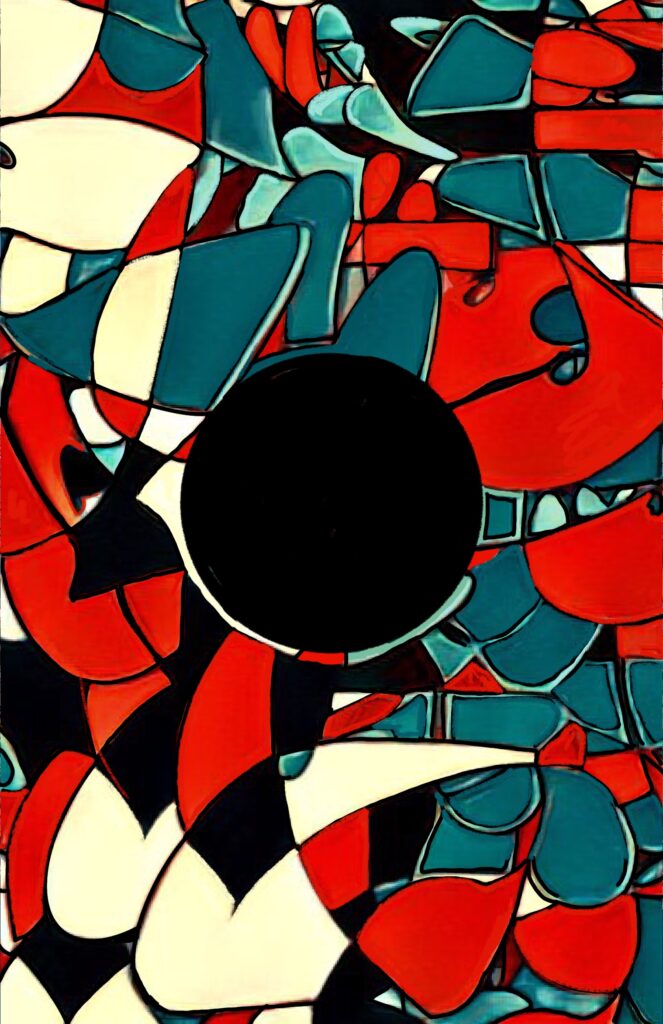Although they are encountered mostly as decoration for journal covers and kitchen magnets, I remain fascinated by the abstractions of Klee, Kandinsky, and, more recently, Hilma af Klint. For me, beyond being icons of gift shop kitsch, each of these artists seems to be painting a map of an unseen world – a world of metaphors, symbols, and patterns that exists right underneath our ordinary world. The abstract relationships between the lines, colors, shapes, and textures speak to the synchronistic relationships between real-world objects and imaginary objects. Most literal (or “realistic”) images can’t as easily speak about these webs of interconnected metaphors and intuitions.
So, with all that in mind, I draw my own “Maps of Unseen Worlds.”

A mandala is a geometric figure representing the universe in Hindu and Buddhist symbolism. In Jungian psychology, a mandala is a symbol in a dream, representing the dreamer’s search for completeness and self-unity. Generally speaking, the mandala is a symmetrical image that incorporates a central circle or square with an image of a deity at its center.
With mandalas in mind, I have been drawing images with a black disc at the center, one that represents a paradoxically unrepresentable void or empty space at the center of consciousness or The Self. Beyond the border of the disc are patterns that represent only semi-ordered multiplicities and only semi-symmetrical patterns. It is a “Black Sun” or an inverted mandala. Just as there is a supermassive black hole at the center of our galaxy, there is a void or emptiness at the center of consciousness. This is my way of meditating on that void – drawing it over and over again in different ways.

What I’m seeking in these images is not a sense of completeness or self-unity (ala Jung) that would fill up the void, but rather the kind of inner awareness that keeps this void open. As I draw the boundary between self and void, it shimmers with an eerie glow. Flashes of line, shape, and color emerge from the boundary, patterns that then unfold and circulate in the spaces beyond. There is no creator of these patterns so much as there is a witness who observes and transcribes them.

In these abstractions, I’m drawing the gap between binaries, and I’m hoping that the viewer might linger in the empty hole that is neither subject nor object, inside or outside, past or future. It is a gap, fissure, or void that opens up between things, beneath things, and deep within their core.
Of course, the images I make aren’t always abstract or inspired by early 20th Century Modernism, but the void always seems to show up in the center.



 Undergrid Four – Pastel on paper, digitally manipulated
Undergrid Four – Pastel on paper, digitally manipulated